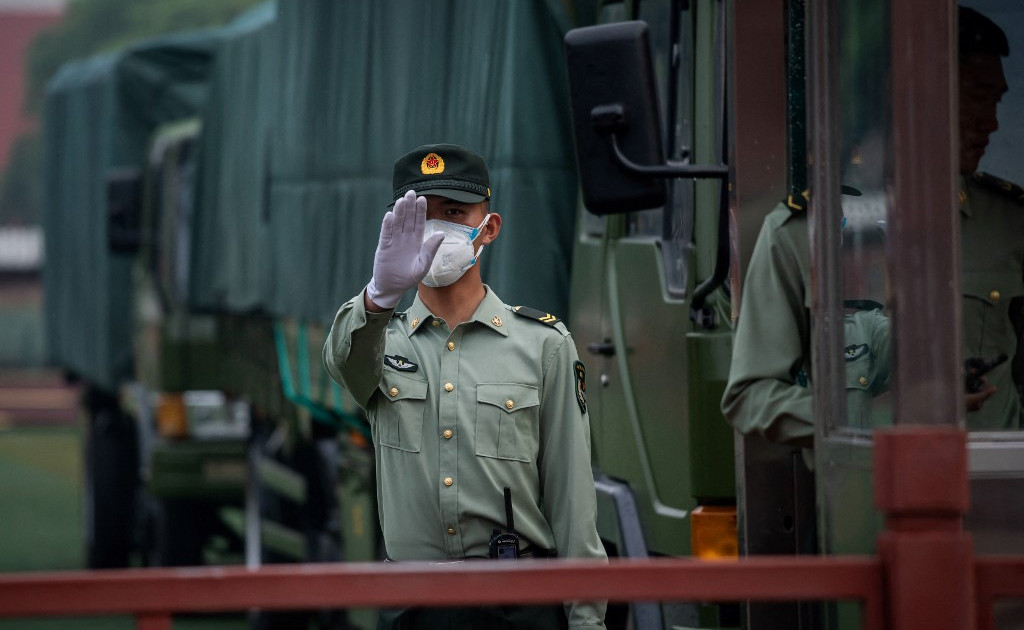‘Terminator of drones’: China unveils stealth-detecting radars
Country’s first portable and ‘multipurpose’ radar can be carried by a single soldier and can detect small and low-flying targets.
China has unveiled new advanced radars that could detect stealth aircraft, including drones, as well as low-flying cruise missiles, as the country continues to aggressively boost its fighting capabilities and flexes its military muscle amid emerging tensions in the region.
Among the “star products” at the Nanjing exhibition, which ends on Saturday, is the country’s first portable and multipurpose radar, which could be carried by a single soldier, according to the state-owned publication, Global Times.
The equipment is being dubbed the “terminator of drones” for its capability to detect small and slow targets that blend themselves under strong noise waves by flying close to the ground.
The so-called “YLC-48 radar” can “effectively detect and track incoming targets from any angle”, according to its developer, the No 14 Research Institute of the state-owned China Electronics Technology Group Corporation (CETC).
The radar uses digital integrated circuits, and it can be mounted on all kinds of lightweight weapons platforms, can conduct missions under all-weather conditions, and can be rapidly deployed and withdrawn, the report said.
The institute has also reportedly developed an Anti-UAV Defence System (AUDS) for the radar, enhancing the country’s defence capabilities “in sensitive regions”.
As the coronavirus pandemic rages around the world in the past year, tensions have also been brewing in the region over multiple issues, where China has found itself in a direct course of political collision with the United States.
Washington and Beijing remain at odds over China’s policies in Hong Kong and its treatment of Uighurs in its northwestern Xinjiang region – issues that Beijing considers as domestic affairs.
Tracking cruise missiles
China also bristles at the increasing closeness between the US and Taiwan, which Beijing considers a renegade province.
Last year, China threatened to “make legitimate and necessary responses” after the US approved the sale of $1.8bn worth of advanced weapons systems to Taiwan.
In recent weeks, China has conducted military exercises involving its aircraft carrier in the waters near Taiwan. It has also been accused of deploying its aircraft in Taiwan’s air defence zone (IZ) on an almost daily basis.
In response, the US has held several joint military exercises with China’s neighbours including Japan, Taiwan and the Philippines, and dispatched its own naval fleet to conduct “freedom of navigation” trips in the disputed South China Sea.
With the increasing tensions in the region, Beijing has also ramped up its military spending in recent years.
In 2019, China launched a new hypersonic ballistic nuclear missile believed to be capable of breaching all existing anti-missile shields deployed by the US and its allies.
The 9th World Radar Expo is now underway in Nanjing, #Jiangsu province. The advanced radar products on display demonstrate how far China has come in terms of developing advanced technology. #WhatsOnJS pic.twitter.com/LJ3e2rXmG7 — Jiangsu, China (@GoJiangsu) April 23, 2021
Last year, it was reported that China is working to double its nuclear warheads.
China has also stepped up its use of unmanned aerial vehicles, as well as its anti-drone radar capabilities.
At the exhibition in Nanjing, another anti-drone radar system making its first public appearance is the S-band 3D TWA, a low-altitude surveillance radar.
According to the Global Times report, the new radar system “can simultaneously detect and track targets including low-flying cruise missiles, warplanes and small drones”.
“It will be deployed in key locations like cities, nuclear plants and military facilities,” the developer was quoted by the report as saying.
Hu Mingchun, director of the No 14 Research Institute that developed the radars said the new systems are necessary “to deal with low-altitude, small and slow targets”.
A separate Global Times report on the exhibition said that the new radar systems developed by China “are considered superior to their foreign counterparts”.
Other radar equipment unveiled at the exhibition are the YLC-8E, which could detect even “the most advanced stealth aircraft”, as well as the KLJ-7A, China’s first airborne radar available for sale to other countries.












